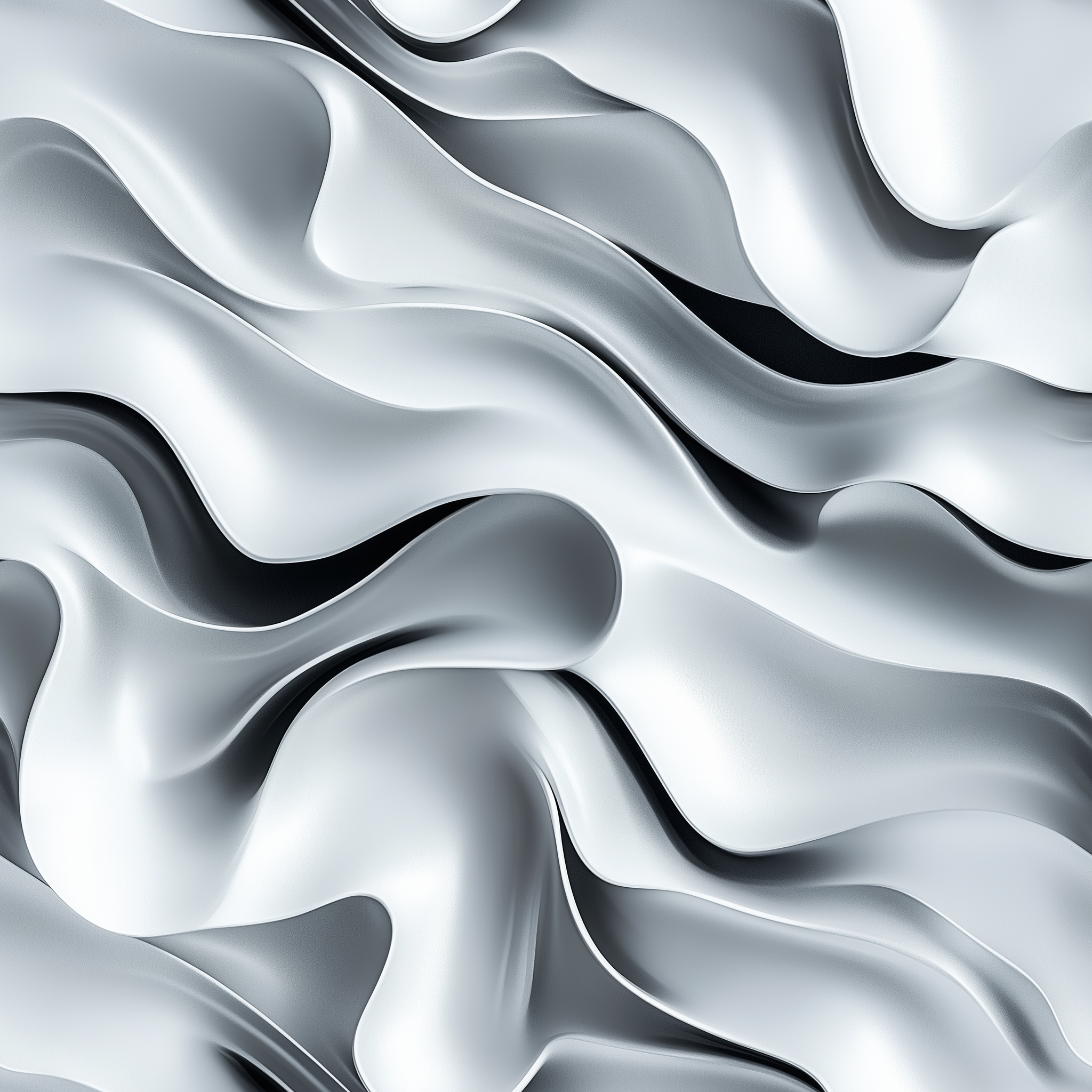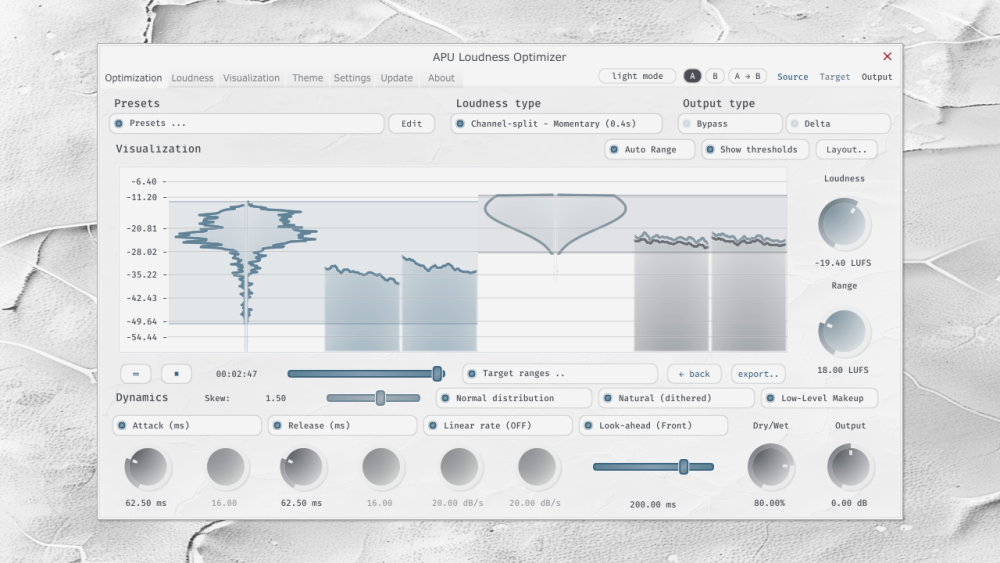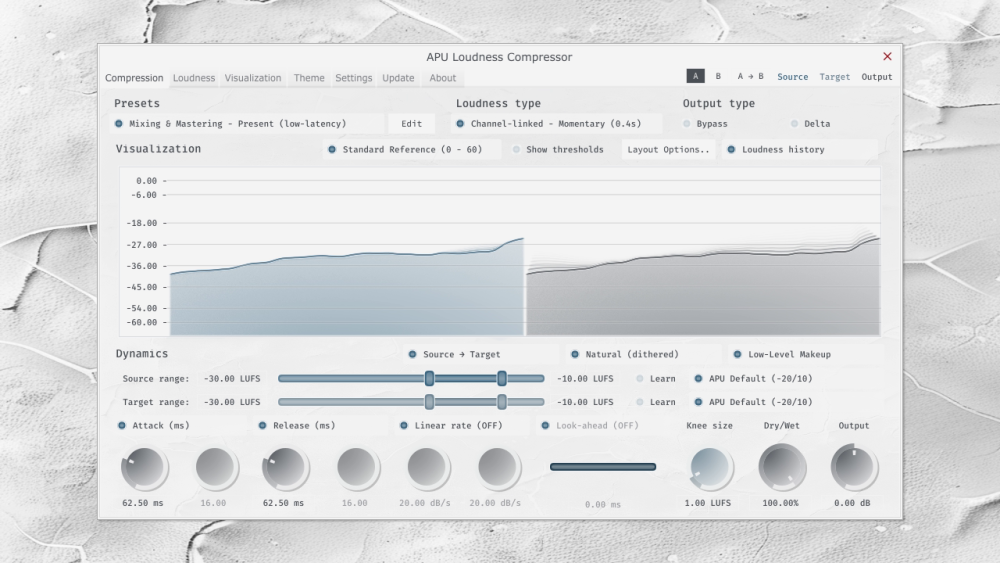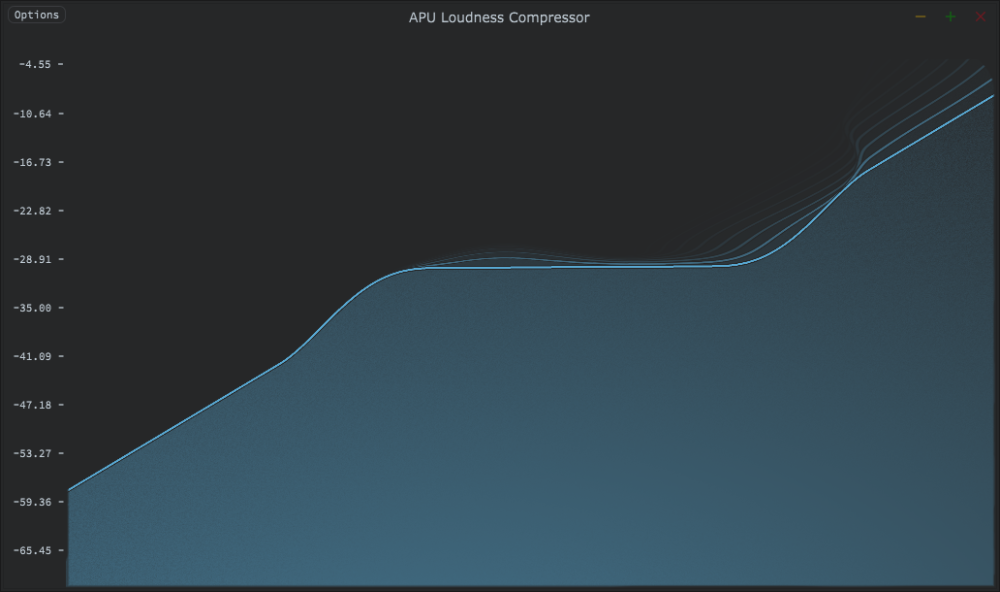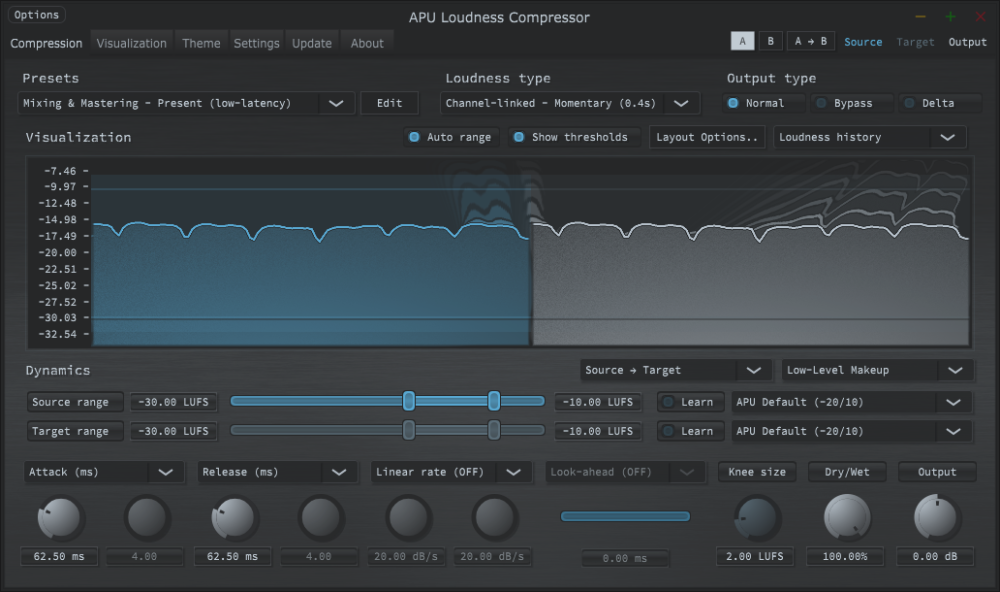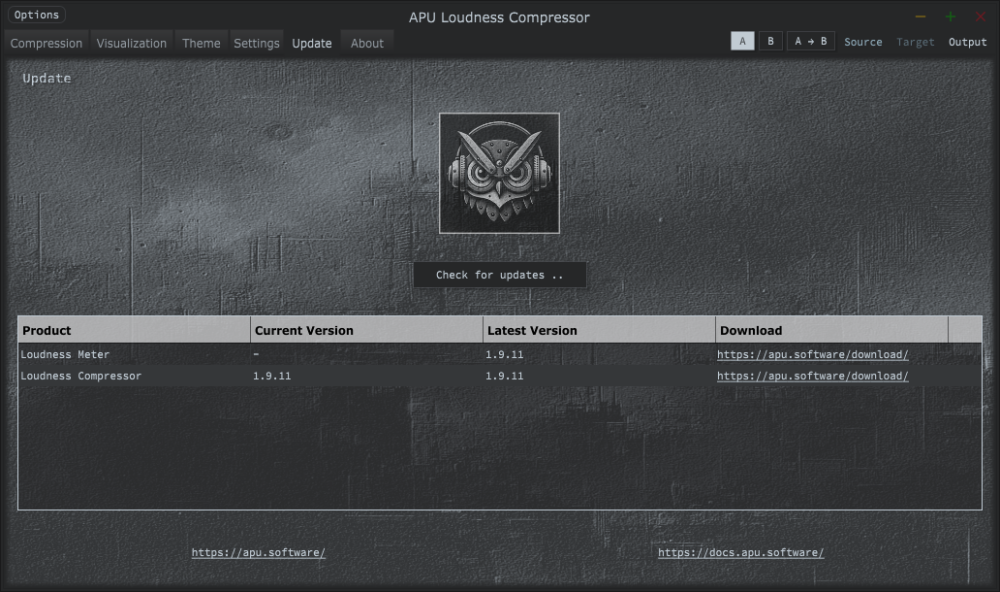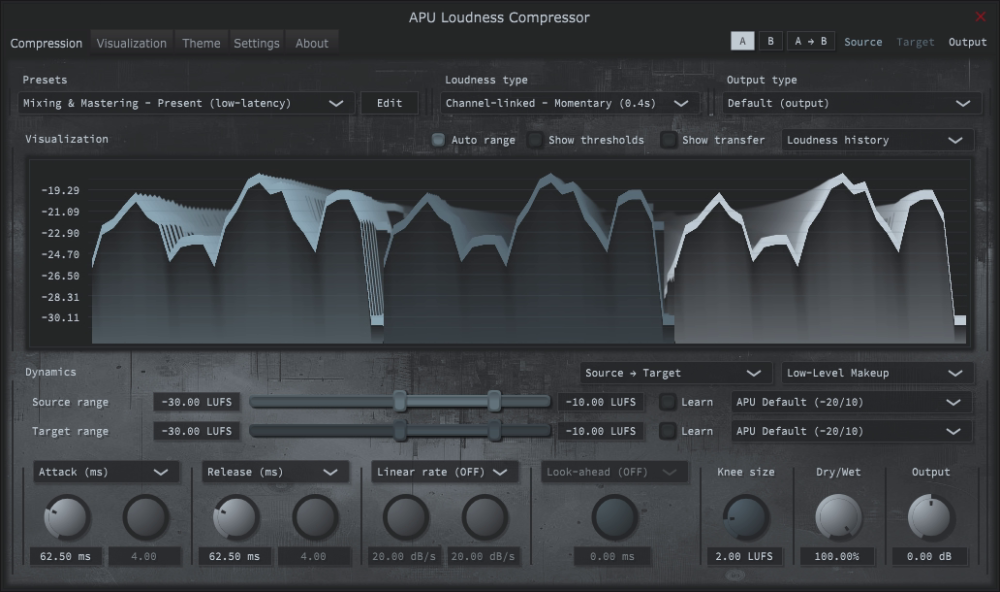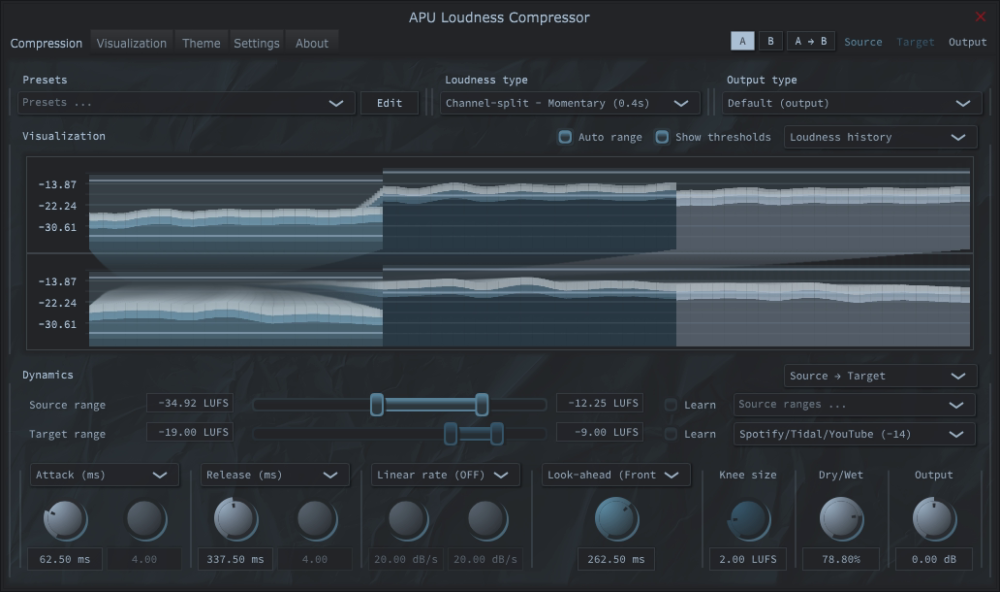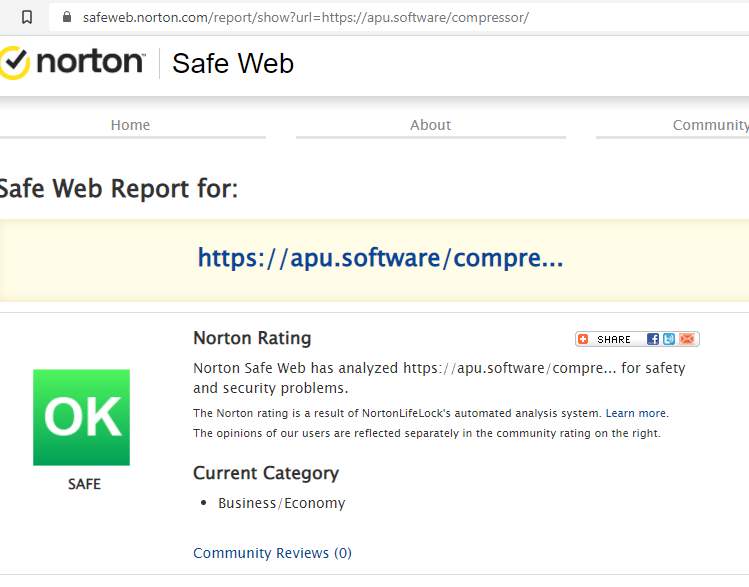-
Posts
28 -
Joined
-
Last visited
Everything posted by Aaron Robinson
-

APU Software - new approach to Compression/Expansion?
Aaron Robinson replied to mibby's topic in Deals
Btw, have been working on a standalone version of the compressor. It's very near to release. It runs on an entire audio file (so, not real-time). Definitely planning on adding support for ARA-2 so it can work w/Cakewalk in that way. It basically takes the entire set of loudness measurements, then maps the histogram to a particular distribution of your choosing. This has the nice result of creating a gain reduction envelope which works "with the grain" of the audio. So, it tends to attack/release while the loudness is already moving in that direction. The temporal element just gives it lots more room to "optimize" the results. The whole "source => target" range thing begins to make more intuitive sense from this perspective, I think. Regardless, it was the original seed of an idea which got me to start developing my own plug-ins. I don't yet really have a sense of the complexity of adding ARA-2 support, but I'm definitely going to do it and looking forward to it. -

APU Software - new approach to Compression/Expansion?
Aaron Robinson replied to mibby's topic in Deals
I'm working on getting a decent video recording setup going, but keep running into driver stability problems. Will be sure to post it here once I get something worth sharing. -

APU Software - new approach to Compression/Expansion?
Aaron Robinson replied to mibby's topic in Deals
There have been a bunch more updates to this compressor: Sound-wise, there are several ballistics types now which IMO caused a jump in sound quality, but I'll be very interested to hear what others think. The default now uses light dithering to reduce aliasing, and to my ears it was surprising how much of a difference it made. The "old" approach is still available, and there are a few variations as well. The visuals have also been improved quite a bit; added axis lines and rehauled the way visualization auto/manual ranges work. The default is now a standard reference range with axis ticks in a particular pattern. You can still switch to "auto" range to automatically follow the audio. The general look-and-feel has been improved quite a few times as well since the last update here, and there are now light mode themes (which is the default for now). -

APU Software - new approach to Compression/Expansion?
Aaron Robinson replied to mibby's topic in Deals
Just updated to v2.1.0, adding a new feature: Adaptive LUFS/RMS -

APU Software - new approach to Compression/Expansion?
Aaron Robinson replied to mibby's topic in Deals
FYI - There have been lots of updates to the compressor, it's at v2.0.1 now. The visualization engine was moved almost entirely to GLSL and you can now configure detailed layout settings. By default, the compressor will automatically adapt to use visualization settings appropriate for the current raster type etc ("AUTO" setting). But you can adjust the layout to show for example only the source signal, or you can overlap the output onto the source, etc. The knee behavior has been improved for all modes as well. Now the knee regions use hermite interpolation for a smoother compression/expansion curve. You can also more quickly switch the output type between normal/bypass/delta as they are now individual buttons instead of a drop-down. Lots more little fixes and improvements, as usual you can see the full list of changes on the download page. -

APU Software - new approach to Compression/Expansion?
Aaron Robinson replied to mibby's topic in Deals
Got around to adding an update check tab to the compressor. It's always a manual check, never automatic. Just switch to the update tab and click "Check for updates" and it will list the latest version available vs which version you're running. Release notes since v1.9.8: - Improve visualization rect cropping glitch - Update tab for checking latest product versions - Additional minor fixes and improvements - Fix transfer function visualization for gate - Improve quick-access layout - Improve panel and other layout elements - Fix look-ahead behavior in some cases -

APU Software - new approach to Compression/Expansion?
Aaron Robinson replied to mibby's topic in Deals
Updated to version 1.9.8: Pulled much of the visualization code into vertex + fragment shaders, so it's more polished and shiny looking now. -

APU Loudness Compressor Oct 13 update v1.96 (not a deal)
Aaron Robinson replied to TheSteven's topic in Deals
Some more updates (v1.9.6): - Add Soft Limiting dynamics type - Extend source/target min to -70.0 to match LUFS gate - Adjust default range/threshold settings - Fix license key displaying incorrectly Although the limiter is "soft" by design, you can actually create a brick wall using True Peak Channel-split mode with Peak look-ahead mode. The look-ahead time just needs to be longer than your attack time. This will give the compressor enough time to bring the gain down in time to avoid an overshoot. So really you end up having more control than most limiters give you. Started writing blog posts as well, if anyone is interested in a developer's perspective on LUFS: https://apu.software/2023/10/06/lufs.html -

APU Loudness Compressor Oct 13 update v1.96 (not a deal)
Aaron Robinson replied to TheSteven's topic in Deals
Just updated the latest version to 1.9.4: There are now a few options for behavior under source min. You can configure it using the drop-down next to the dynamics type drop-down. Note that it's only available for "source:target" mode. The options are: - Low-Level Makeup (default mode, unchanged from previous versions) - Low-Level Bypass (loudness below source min is untouched) - Low-Level Gate (loudness below source min is silenced) Both of these new modes still get filtered through the ballistics controls (attack/release), to help avoid artifacts. The knee is also applied to make the transition smoother. -

APU Loudness Compressor Oct 13 update v1.96 (not a deal)
Aaron Robinson replied to TheSteven's topic in Deals
Thanks for the reminder, I’m hesitant to ever send emails out but I do want to add an update check and it fell off the list of priorities! -

APU Software - new approach to Compression/Expansion?
Aaron Robinson replied to mibby's topic in Deals
Improved the visualizations to use a smooth filled plot instead of rectangles. Hopefully this feels a bit more intuitive. Also added the ability to change the global default settings (it's in the preset/theme managers). -

APU Software - new approach to Compression/Expansion?
Aaron Robinson replied to mibby's topic in Deals
That’s helpful feedback, thanks. The video is an automation so that’s why there isn’t a mouse, but some way to highlight where the focus is would definitely make the video more useful. -

APU Software - new approach to Compression/Expansion?
Aaron Robinson replied to mibby's topic in Deals
Decided to spend time improving CPU usage and it seems to have paid off. For my m1, it dropped from 7% to 2% according to Instruments. Compatibility is better now as well, after rewriting part of the OpenGL engine to fix issues on certain AMD setups. Latest version is now v1.8.4 -

APU Software - new approach to Compression/Expansion?
Aaron Robinson replied to mibby's topic in Deals
Ended up creating a Learn function for the source and target ranges. Much easier to quickly get the basic settings configured this way. Updated the demo video on the website to see it being used. Lots of user interface improvements as well.. -

APU Software - new approach to Compression/Expansion?
Aaron Robinson replied to mibby's topic in Deals
yea, this would be great. I'll think of a non-intrusive way to add some sort of update check. 100% agree it should be a manual check. -

APU Software - new approach to Compression/Expansion?
Aaron Robinson replied to mibby's topic in Deals
Spent this past week making lots of cosmetic improvements. New logo, too https://www.youtube.com/watch?v=I7mFmVsw3vI -

APU Software - new approach to Compression/Expansion?
Aaron Robinson replied to mibby's topic in Deals
If the audio range goes outside of the source range slider, it won’t be compressed or expanded (other than the knee transition area). It will still apply a fixed amount of gain if the target min is higher than source min, though. For leveling here are two approaches: Source => Target approach 1) Set the source range so the vocals are generally within range (doesn’t have to be perfect, this is just to get in the ballpark). 2) Set the target range quite narrow. IMO shift+drag on the range slider is the easiest approach because you can continuously hear how the dynamics are being impacted and let your ears guide you. Just shift+click the middle of the slider and drag the mouse up/down/left/right while listening. 3) Check the quietest sections and listen to how the settings behave during the transitions between loud/quiet. If quiet sections are getting lifted up too high you can raise the source min a bit, just as with a normal threshold control. Downward compression approach 1) Switch the drop-down to the top-right of the source range slider. There is an option for downward compression. 2) Set the threshold and ratio as you would with any typical compressor. In this mode, the controls should hopefully seem familiar. Here is my attempt at demonstrating, not with vocals but with a full song, using the histogram hold feature in the process. Sorry for the lack of voice over, I gotta find the time to create better videos and/or site tutorial images. -

APU Software - new approach to Compression/Expansion?
Aaron Robinson replied to mibby's topic in Deals
1. Here or KVR is good (there’s a thread under the new products section already). I get notified either way. 2. Yep, that’s all you should need to do. 3. Basic idea is to set the input range to cover the range you want compressed, yea. The compression/expansion ratio is based on how large the source range compared to the target range. But there is also a downward compression option now which you can switch to using the drop-down to the upper right of the source range slider. -

APU Software - new approach to Compression/Expansion?
Aaron Robinson replied to mibby's topic in Deals
There have been a ton of updates to this compressor since this thread was last active. Changes since v1.6.1 (last thread update) Textured meters Quick-access buttons for auto-range & breath residual User interface cleanup Simplify switching between raster types and dynamics types Support Dolby Atmos/SMPTE channel orderings Fix sidechain output! Improve license input visibility Small improvements to context sensitive help Disable output gain during bypass! Support traditional compression/expansion configuration types in addition to source => target Knobs, dry/wet, output gain Aesthetic improvements Support for Pro Tools Support mouse wheel for combo-boxes Condense user interface a little Support for macOS Mojave (10.14) Output types: Standard, Bypass, Delta Fix output offset in extreme cases Improved preset save Fix missing source knee threshold drawing Fix missing font characters Default manual reset, with a reasonable general-purpose default loudness range Default breath residual mode enabled Aesthetic improvements Fix mono channels when using stereo loudness types -

APU Software - new approach to Compression/Expansion?
Aaron Robinson replied to mibby's topic in Deals
-

APU Software - new approach to Compression/Expansion?
Aaron Robinson replied to mibby's topic in Deals
I submitted for a review. I don't know wtf this is based on. -

APU Software - new approach to Compression/Expansion?
Aaron Robinson replied to mibby's topic in Deals
Found the issue, fixed and added a unit test to make sure it doesn't happen again. It will be fixed in v1.6.1 which is currently building and running automated tests, usually takes about 2 hours for that to complete and for the site to update. Thank you for finding and reporting the issue! -

APU Software - new approach to Compression/Expansion?
Aaron Robinson replied to mibby's topic in Deals
Interesting. Looks like that’s far below source/target min so probably not directly related to knee. I have an idea what could cause this, I’ll work on this as top priority. -

APU Software - new approach to Compression/Expansion?
Aaron Robinson replied to mibby's topic in Deals
I've added both of these to the latest version (v1.6.0). Thanks again for mentioning it -

APU Software - new approach to Compression/Expansion?
Aaron Robinson replied to mibby's topic in Deals
yea something along those lines. Probably not in sequence but integrated together so the attack/release rate of the stages don’t accumulate together and get out of control.

